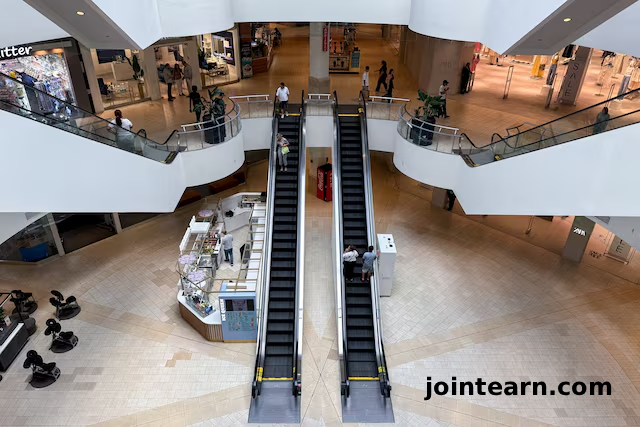
2025
🇺🇸 Economic Divide Deepens Across Corporate America
U.S. companies are grappling with growing financial strain as the gap between affluent and lower-income consumers widens, reshaping spending habits and profitability across industries. Executives from leading brands like Coca-Cola, Procter & Gamble, Target, and O’Reilly Automotive have all noted a concerning trend — lower-income households are cutting back, while wealthier consumers continue to spend despite persistent inflation and new tariffs.
This economic bifurcation has forced companies to adapt quickly, revising pricing strategies, resizing products, and rethinking how they cater to consumers at both ends of the income spectrum.
“There is bifurcation in consumer behavior,” said Andre Schulten, CFO of Procter & Gamble (PG.N). “While financially secure consumers are buying larger pack sizes, those living paycheck to paycheck are seeking deals as inflation remains high.”
With inflation hovering around 3% — still above the Federal Reserve’s 2% target — consumers’ optimism about future financial conditions remains subdued. Nearly two-thirds of shoppers plan to delay their holiday spending until Thanksgiving weekend, hoping to take advantage of major discounts, according to the National Retail Federation.
🛒 Consumer Spending Patterns Reveal the Divide
For companies that rely heavily on middle- and lower-income shoppers, sales and profit growth have become elusive.
- Target (TGT.N), which sells mostly non-essential goods, recently announced 1,800 job cuts amid sluggish consumer activity.
- O’Reilly Automotive (ORLY.O) reported that some customers are delaying vehicle repairs, even as the company raised its full-year revenue forecast.
- Coca-Cola (KO.N) and Procter & Gamble are introducing smaller-sized products to maintain affordability. Coca-Cola recently launched mini single-serve cans across U.S. convenience stores to appeal to price-sensitive buyers.
“Our system in the U.S. is adapting to both the higher and lower ends of the market,” said John Murphy, CFO of Coca-Cola. “Affordability and value are critical at the lower end, while premiumization continues to work with higher-income customers.”
Despite these adaptations, the SPDR Consumer Staples ETF — which tracks essential goods companies — has gained less than 1% this year, compared with a 15% rise in the S&P 500, highlighting how uneven the recovery has been.
💳 Credit Market Jitters Add Pressure
The economic strain extends beyond retail, shaking the credit markets that cater to low-income consumers. Several lenders targeting subprime borrowers have filed for bankruptcy in recent months, reflecting growing financial distress among the nation’s most vulnerable households.
- PrimaLend Capital Partners, a car financing firm for buyers with limited credit, filed for bankruptcy this week.
- Tricolor, a used-car seller and auto loan provider focused on Hispanic communities, also went bankrupt in September.
- PROG Holdings (PRG.N) cut its annual revenue forecast as demand wanes, with shares down 26% year-to-date.
“While unemployment remains low, heightened financial stress and caution among lower-income consumers are significant headwinds,” said Steve Michaels, CEO of PROG Holdings.
Adding to the strain, President Donald Trump’s new 25% tariffs on imported medium- and heavy-duty trucks — set to take effect on November 1 — could raise costs further. “For highly competitive sectors, there may be limited room to raise prices,” said Dana Telsey of Telsey Advisory Group, suggesting that some companies will have to absorb additional costs.
🏨 Corporate Winners and Losers Emerge
The widening income gap is now visible within companies themselves. Hotel chains like Hilton (HLT.N) and Wyndham Hotels (WH.N) are seeing softness in their budget brands, even as higher-end properties maintain steady demand.
“Our franchisees in lower chain scales are beginning to discount more to capture demand,” said Wyndham CEO Geoffrey Ballotti.
In contrast, businesses serving affluent customers are outperforming. Toy giant Hasbro (HAS.O) and rival Mattel (MAT.O) both saw sharp drops in toy sales, but Hasbro’s gaming division — targeting wealthier consumers — helped the company raise its annual guidance.
“It’s a tough environment for companies that don’t cater to the well-to-do,” said Mark Zandi, chief economist at Moody’s Analytics. “Businesses are increasingly feeling the fallout on sales and profits from the growing gap between the haves and the have-nots.”
📊 Key Takeaways
- Affluent consumers are driving growth, keeping U.S. spending afloat.
- Lower-income households are cutting back sharply amid inflation and higher borrowing costs.
- Retailers and manufacturers are adjusting product sizes, pricing, and marketing to appeal to both ends of the income spectrum.
- Credit lenders to subprime borrowers are under severe financial stress.
- Tariffs and inflation remain major risks heading into 2026.


Leave a Reply